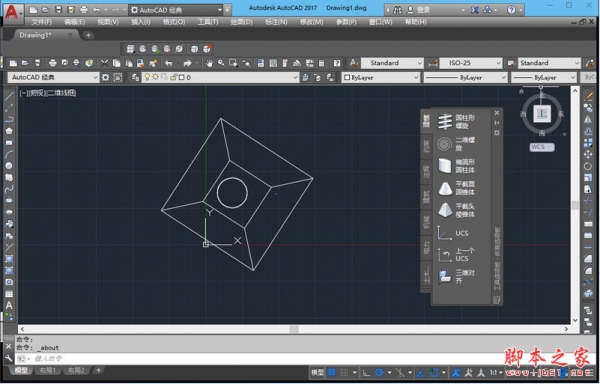Oracle 两个逗号分割的字符串,获取交集、差集(sql实现过程解析)
Oracle数据库的两个字段值为逗号分割的字符串,例如:字段A值为“1,2,3,5”,字段B为“2”。
想获取两个字段的交集(相同值)2,获取两个字段的差集(差异值)1,3,5。
一、最终实现的sql语句
1、获取交集(相同值):
select regexp_substr(id, '[^,]+', 1, rownum) id from (select '1,2,3,5' id from dual) connect by rownum <= length(regexp_replace(id, '[^,]+')) +1 intersect -- 取交集 select regexp_substr(id, '[^,]+', 1, rownum) id from (select '2' id from dual) connect by rownum <= length(regexp_replace(id, '[^,]+')) +1; /*结果: 2 */
2、获取差集(差异值):
select regexp_substr(id, '[^,]+', 1, rownum) id from (select '1,2,3,5' id from dual) connect by rownum <= length(regexp_replace(id, '[^,]+')) +1 minus --取差集 select regexp_substr(id, '[^,]+', 1, rownum) id from (select '2' id from dual) connect by rownum <= length(regexp_replace(id, '[^,]+')) +1; /*结果: 1 3 5 */
二、实现过程用到的函数用法说明
1、regexp_substr
正则表达式分割字符串,函数格式如下:
function regexp_substr(strstr, pattern [,position] [,occurrence] [,modifier] [subexpression]) __srcstr:需要进行正则处理的字符串 __pattern:进行匹配的正则表达式 __position:可选参数,表示起始位置,从第几个字符开始正则表达式匹配(默认为1) __occurrence:可选参数,标识第几个匹配组,默认为1 __modifier:可选参数,表示模式('i'不区分大小写进行检索;'c'区分大小写进行检索。默认为'c'。)
使用例子:
select
regexp_substr('1,2,3,5','[^,]+') AS t1,
regexp_substr('1,2,3,5','[^,]+',1,2) AS t2,
regexp_substr('1,2,3,5','[^,]+',1,3) AS t3,
regexp_substr('1,2,3,5','[^,]+',1,4) AS t4,
regexp_substr('1,2,3,5','[^,]+',2) AS t5,
regexp_substr('1,2,3,5','[^,]+',2,1) AS t6,
regexp_substr('1,2,3,5','[^,]+',2,2) AS t7
from dual;
/*结果:
1 2 3 5 2 2 3
*/
2、regexp_replace
通过正则表达式来进行匹配替换,函数格式如下:
function regexp_substr(srcstr, pattern [,replacestr] [,position] [,occurrence] [,modifier]) __srcstr:需要进行正则处理的字符串 __pattern:进行匹配的正则表达式 __replacestr:可选参数,替换的字符串,默认为空字符串 __position:可选参数,表示起始位置,从第几个字符开始正则表达式匹配(默认为1) __occurrence:可选参数,标识第几个匹配组,默认为1 __modifier:可选参数,表示模式('i'不区分大小写进行检索;'c'区分大小写进行检索。默认为'c'。)
使用例子:
select
regexp_replace('1,2,3,5','5','4') t1,
regexp_replace('1,2,3,5','2|3',4) t2,
regexp_replace('1,2,3,5','[^,]+') t3,
regexp_replace('1,2,3,5','[^,]+','') t4,
regexp_replace('1,2,3,5','[^,]+','*') t5
from dual;
/*结果:
1,2,3,4 1,4,4,5 ,,, ,,, *,*,*,*
*/
3、connect by
(1)connect by单独用,返回多行结果
select rownum from dual connect by rownum < 5;
/*结果:
1
2
3
4
*/
(2)一般通过start with . . . connect by . . .子句来实现SQL的层次查询
select id, name, sys_connect_by_path(id,'\') idpath, sys_connect_by_path(name, '\') namepath from ( select 1 id, '广东' name, 0 pid from dual union select 2 id, '广州' name , 1 pid from dual union select 3 id, '深圳' name , 1 pid from dual ) start with pid = 0 connect by prior id = pid;
/*结果:
1 广东 \1 \广东
2 广州 \1\2 \广东\广州
3 深圳 \1\3 \广东\深圳
*/
三、总结
由上面函数用法,可知下面语句可以把字符串“1,2,3,5”转换为4行记录
select regexp_substr(id, '[^,]+', 1, rownum) id from (select '1,2,3,5' id from dual) connect by rownum <= length(regexp_replace(id, '[^,]+')) +1
然后在2个结果中使用集合运算符(UNION/UNION ALL 并集,INTERSECT 交集,MINUS 差集)进行最终处理。
总结
以上所述是小编给大家介绍的Oracle 两个逗号分割的字符串,获取交集、差集的sql实现过程解析,希望对大家有所帮助,如果大家有任何疑问请给我留言,小编会及时回复大家的。在此也非常感谢大家对潘少俊衡网站的支持!
如果你觉得本文对你有帮助,欢迎转载,烦请注明出处,谢谢!
版权声明
本文仅代表作者观点,不代表本站立场。
本文系作者授权发表,未经许可,不得转载。
本文地址:/shujuku/oracle/97598.html










